Touring California Native Gardens, This Saturday
Visit two of our landscape design projects on Saturday, May 3rd in the East Bay
We’re excited to share two of our landscape design projects on the Bringing Back the Natives garden tour this year!
You're invited to explore these gardens on this Saturday, May 3rd from 10a-5p in El Cerrito and Oakland. The tour is free to attend, but registration is required in order to receive the map of the garden locations.
There's more than fifty native plant gardens across Alameda and Contra Costa counties open, with some showcasing their green-home features as well. In addition to our two projects that are on Saturday only, the tour continues on Sunday, May 4th for inland cities throughout the East Bay.
With everything going on in the world right now, we're looking forward to gathering in the garden together in connection with each other and the natural world.
In case you missed it, this is 'Growing Conditions', a new publication and newsletter of Plantkind, an outdoor spatial design company based in the San Francisco Bay Area. The previous post shared more context about new seasons and what we’re digging into here with the newsletter.
Sharing Gardens Online vs IRL Together
It's weird trying to figure out how to share a garden on the world wide web, so much so that I've not been posting much online for several years. It's kinda contradictory to being with the plants for real in the landscape.
While I'm sitting on a pile of several thousand photos of each of these gardens, waiting to be uploaded to all your favorite social media platforms in near future, at this point you might as well just come see them for real yourself.
I'm sharing some photos of the gardens here, and there's more photos of each project on the garden project webpage of the tour website, if you know where to look. However, I'd somewhat encourage you to avert your eyes and not examine too closely. You might know I'm pretty conscious of spoilers, and typically only watch the first half of movie trailers, or attend concerts having heard only one track before. You could, if you feel up to the challenge, just come be in the garden.
El Cerrito Project
Scale → 4,800 sq. ft. front, 5,200 sq. ft. back, 100% native (except fruit trees and veggie beds)
Timeline → Garden was installed in December 2023
Accessibility → This garden is on a steep slope and is accessed via many steps, some with no rail, and is sadly not a garden for anyone with balance or mobility difficulties
Team → Thank you to the team at LandSpaces for building this project and bringing it to life
Details → Learn more about this garden here on the project webpage of the native garden tour
Oakland Project
Scale → 500 sq. ft. front, 100 sq. ft. parking strip, 1,250 sq. ft. back garden, 90% native
Timeline → Garden was installed in stages, beginning with some in 2016, sheet mulching in 2019, and with most of the natives installed in April 2024
Accessibility → Garden is flat with half of the garden viewable in the front sidewalk zone, and at least partially wheelchair accessible in the backyard
Team → Thank you to the whole crew at Terra Gardens for building this project, the team at Joinery Structures for the millwork, Bill Smullin for the original fence build, Modern Spaces and Sheds for the storage shed, and Dorothy for the on-going care of the garden
Details → Learn more about this garden here on the project webpage of the native garden tour
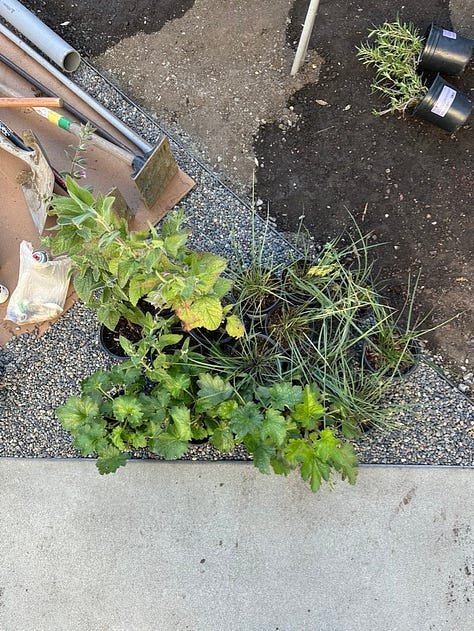

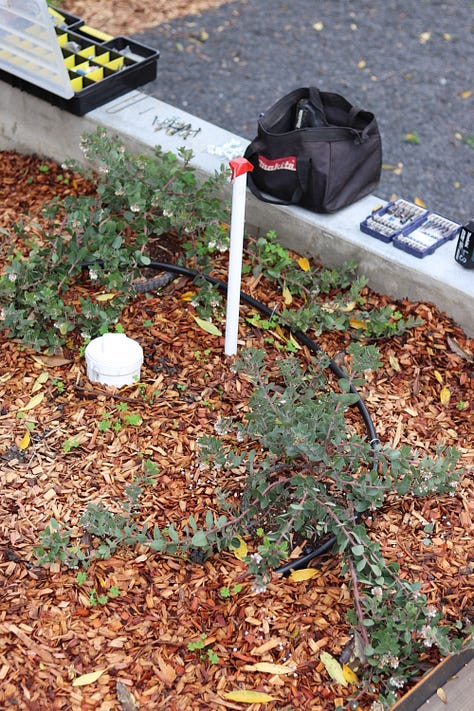
What Young Gardens Feel Like
Both of these projects were installed pretty recently. We’re sharing them as examples of what young gardens can feel like, how quickly plants grow at first, and what to expect in those beginning years of a new California native garden.
Each of the gardens are still figuring out what they’re about. You’ll see blank spots, areas under consideration, some recently added plants that are starting to fill in, and some plants that didn't work the first time around. The gardening process is iterative and never finished.
At the same time, even after planting many gardens, we're still in awe of how quickly the plants start to take over the space and form into an intermingled palette, when given just a bit of time and space to grow.
Seeds Planted via Livestream
When the Covid pandemic started, I reached out to Kathy about helping to bring the annual in-person garden tour online by live streaming through Zoom. We had never met before then but everyone jumped into action to produce the garden tour digitally that year.
Based on everything learned during that video version of the garden tour, including of course Doug Tallamy's legendary talk, Plantkind then shifted to completely focus only on California native gardens moving forward.
From our own garden at home in both Oakland and then Sebastopol where we started planting the exact plants we saw on the tour, all the way through the clause in our client project agreement that stipulates at least 3/4 but ideally one-hundred percent of your future garden will be California native plants.
The two landscape design projects we are sharing on the tour this year are a direct result of learning about native plants through the tour that year.
Many Gardens to Visit
Driving around the past three years with Kathy, Sloane, Celsa, and Ann — we've’ve been lucky enough to visit many gardens. The routine of those days normally looks like us spending around half hour in each garden, before we scurry off to the next one. Some of my favorites have been Stefanie Pruegel's expansive garden in San Leandro, anything that Pete Veilleux works on of course, Peter and Jocelyn’s own home garden, and everything that Leslie Buck's garden teaches us.
While some of the gardens cycle through being featured on certain years, and I haven't seen all the gardens, especially the many new introductions on the tour this year, there's so many gardens to explore. You can view the list of the gardens on the tour this year here, and upon registering you'll receive the map of all the garden locations.
Assorted Key Takeaways, So Far
In the spirit of starting to open-source some of the learnings that have built up over the past years, I thought it would be fun to just drop a quick list of some things that I've learned in the past garden tours:
Native rose has huge rose hips
Add sitting rocks in the garden to hang out
If you're not super into the wild look, you can still have a clean and trimmed look with the native plants
Collect rainwater with dry creek to keep water in the yard
Mounding keeps water from over-saturating plants that you’d find on the hillside
Dwarf Coyote Bush is option for smaller spaces
Focus on the neighborhood to create something lush year round for them
Don’t worry about permanence, can transplant and move things around if they don't work in one spot
Humans can go to the grocery store, but wildlife can’t, create a produce section (caterpillars) for the birds
Get buy-in from clients that we can prune it in order to plant larger trees like Oaks
Manzanita means little apple in Spanish
Garden can be self expression and honor the native plants at same time
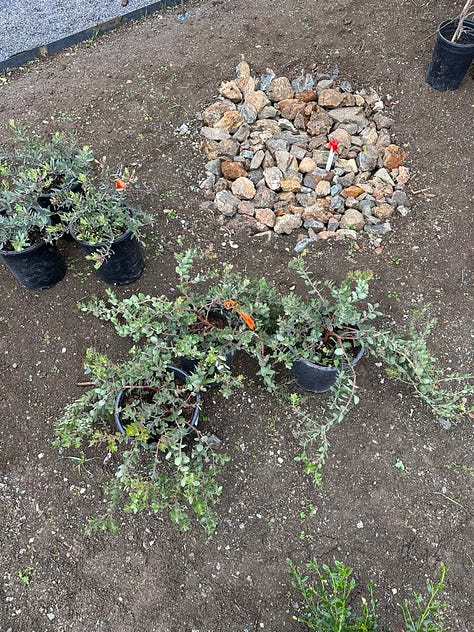
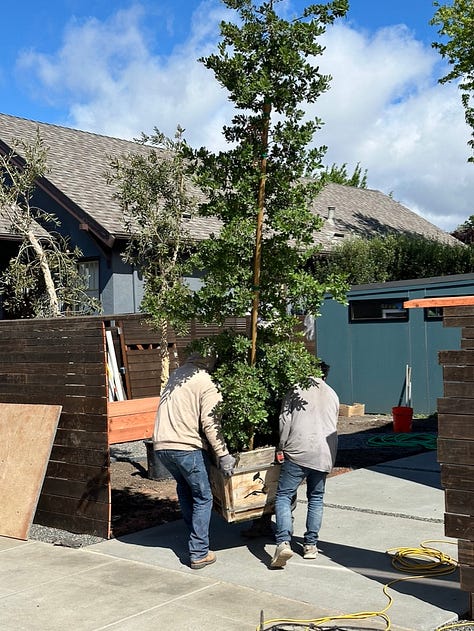
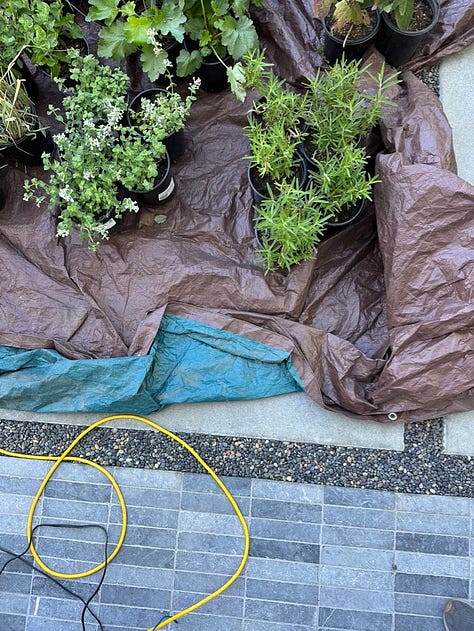
Thank you to all of the friends that have helped get the gardens ready, and that have volunteered to greet you at the gardens plus answer your plant questions throughout the day. And so much appreciation to Mat, Anita, Hannah, and Mike for opening up their gardens for all of us to experience!
We’d like to acknowledge that these gardens are on the ancestral unceded land of the Ohlone Indigenous people.











love love